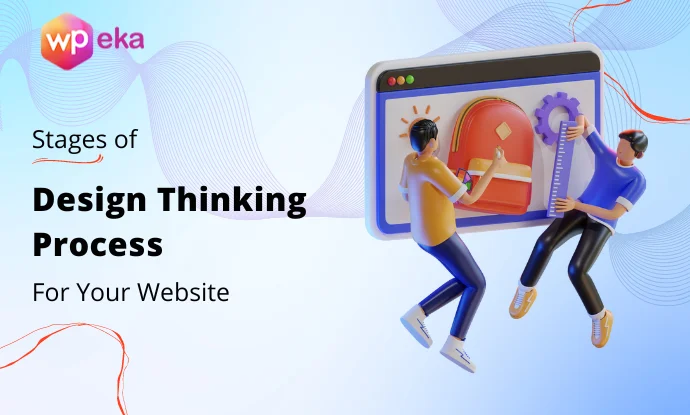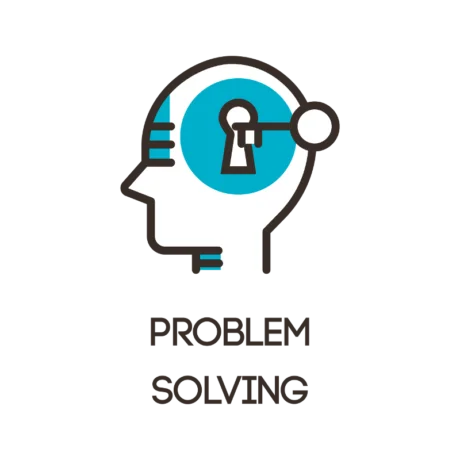Stages of the Design Thinking Process – Ultimate Guide

Design Thinking is a problem-solving and solution-focused methodology that helps companies and individuals achieve the desired outcome on internal issues or develop a future plan. It allows the system user to construct a structured plan to understand innovation and grow as a company.
The theory can prove to be extremely useful in tackling complex problems that are ill-defined or unknown by understanding the human needs involved, re-framing the problem in human-centric ways, creating many ideas in brainstorming sessions, and adopting a hands-on approach in prototyping and testing. Understanding these stages of Design Thinking will empower anyone to apply the Design Thinking methods to solve complex problems around us: in our workplaces, our countries, and even our planet.
Nobel Prize laureate Herbert Simon outlined one of the first formal models of the Design Thinking process in his 1969 seminal text on design methods, “The Sciences of the Artificial.” His prescribed model consists of seven major stages, each with component stages and activities, and was widely influential in shaping some of the most commonly used Design Thinking process models today.
One may not know where to begin when trying to understand design thinking. There are many different keys to understanding the design process.
What is the Design Thinking Process?
The process of design thinking is a structured approach to problem-solving that emphasizes empathy, creativity, and iterative testing. It typically consists of five stages of design thinking: Empathize, Define, Ideate, Prototype, and Test.
The first stage of the design process is Empathy, which involves understanding the needs, motivations, and pain points of the people you are designing for. This often includes conducting interviews, observations, and engagement with users to gain deep insights.
In the second stage of the design process, the define stage, you synthesize the information gathered during the empathy phase to define the core problem or opportunity you will be addressing. This step helps you create a clear and focused problem statement that guides the rest of the design process.
Next, in the Ideate stage, you generate many ideas to solve the defined problem. Out of the 5 stages of design thinking, this is a creative phase where brainstorming, sketching, and other ideation techniques are used to explore different concepts and possibilities.
The second stage in design thinking is the Prototype stage, where you create tangible representations of your concepts. These prototypes range from simple sketches or mock-ups to more sophisticated models or digital prototypes. The goal is to quickly and iteratively test your ideas to gather feedback.
Finally, in the Test stage, you gather user feedback by testing your prototypes. This feedback helps you evaluate the effectiveness of your solutions, identify areas for improvement, and make necessary iterations. The process is often iterative, meaning that you may go back and forth between stages to refine and optimize your solutions based on user feedback and insights.
Overall, the Design Thinking process is a human-centered and iterative approach that encourages collaboration, creativity, and a deep understanding of users’ needs to create innovative and effective solutions.
Stages of the Design Process
Many variants of the Design Thinking process are in use today, and while they may have different stages ranging from three to seven, they are all based upon the same principles featured in Simon’s 1969 model.
1. Empathize – First Stage Of Design Thinking Process
The Design Thinking process starts with empathy. To build desired products and services, you need to understand who your users are and what they need. What do they hope to get out of the product you’re creating? What difficulties and problems do they encounter in this situation?
In the empathize phase, you will spend time doing interviews, studying how actual users (or individuals who represent your target demographic) engage with an existing product, and generally observing facial expressions and body language.
The empathize phase, which comes first in the Design Thinking process, pushes you to put your preconceptions aside. With first-hand knowledge at your disposal, you can design with actual users in mind. That’s the main goal of design thinking!
2. Define – Second Stage Of Design Process
In this stage of design thinking, learners emphasize being mindful of people groups’ needs and creating bits of knowledge. The expression “In what manner may we….” is frequently used to define a perspective, which is an announcement of the:
users + requirements + insight
This states a proposal about rolling out improvements that will affect people groups’ encounters. This stage involves prototyping to encourage the development procedure. The thoughts from the last couple of steps are currently put into a physical frame. This is a decent method for advancing and researching thoughts that limit to a particular idea.
3. Ideate – Third Design Thinking Stage
Ideating is a fundamental part of design thinking process. Learners are tested to conceptualize a heap of thoughts and to suspend judgment. No thought is too implausible, and nobody’s thoughts are rejected. Ideating is about imagination and fun. In the ideation stage, the amount is supported. Learners might be requested to create a hundred thoughts in a single session. They turn out to be senseless, adroit, daring people, pie-in-the-sky masterminds and visionaries of the impossible and the conceivable.
It is vital to make thoughts that have design choices that are not particular. Along these lines, numerous choices can be choices as the procedure proceeds. The “issue”, or design within reach, is intended to be settled here. More arrangements are required keeping in mind the end goal to explain the “issue”.
4. Prototype – Fourth Stage Of Design Thinking

Prototyping is a harsh and quick part of the planning procedure. A prototype can be a drawing, demonstration, or cardboard box. It is an approach to passing on a thought rapidly. Learners discover that it is smarter to flop early and frequently as they make prototypes.
This key is more about reasoning than doing in the design process. In the wake of making more thoughts, there should be more considered refining the current ideas. Before one can proceed during the time spent planning, there should be refinement inside the thoughts previously any moves can make put.
5. Test – Final Design Thinking Process Stage
Testing is an iterative procedure that gives learners criticism and is the fifth step in design process. The purpose of testing is to realize what works and what doesn’t and then to emphasize. This implies returning to your model and changing it in view of criticism. Testing guarantees that learners realize what works and what doesn’t work for their clients.
The intention is to receive criticism, refine arrangements, and learn more about the outline. A critical point to remember is that there will be disappointment; however, it is essential to discover an endeavor that works for a specific end goal.
FAQ
The 5 stages of design thinking process are Empathize, Define, Ideate, Prototype, and Test.
In the defined stage of the design thinking process, we develop a problem statement. This involves gathering information from users and stakeholders to understand the issue that needs resolution.
The design thinking process’s 1st stage, the empathize step, discusses discovering clients’ difficulties.
Conclusion
Design thinking is a continuous process that emphasizes user and designer cooperation. It gives creative solutions to life by modeling their thoughts, emotions, and actions after actual users.
This human-centered design approach has five main stages of design thinking that help elevate the design. Because design thinking is an iterative, non-linear process, you can even go back to earlier stages at any time during the design process.
If you are planning to create a design website for your client, make sure to have some important legal pages to safeguard your creative works. We recommend using WP Legal Pages plugin to create legal pages seamlessly.
If you enjoyed reading this article, check out our other articles:
- Best Terms and Conditions Generator
- Iubenda Alternative – A Comprehensive Guide
- TermsFeed Alternatives- A Comprehensive Review
Grab the WP Legal Pages plugin to make your website compliant with any privacy law.


Great List. I have now bookmarked it so that I can keep referring back to it when writing certain blog posts and articles. Thank you.